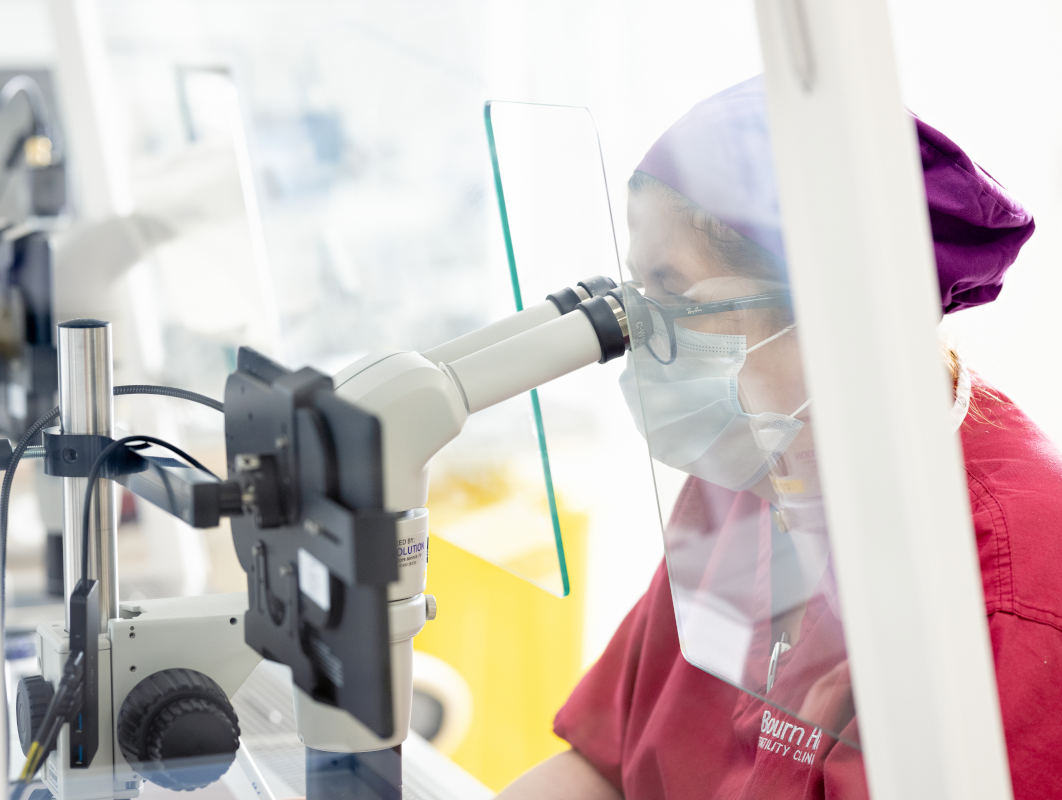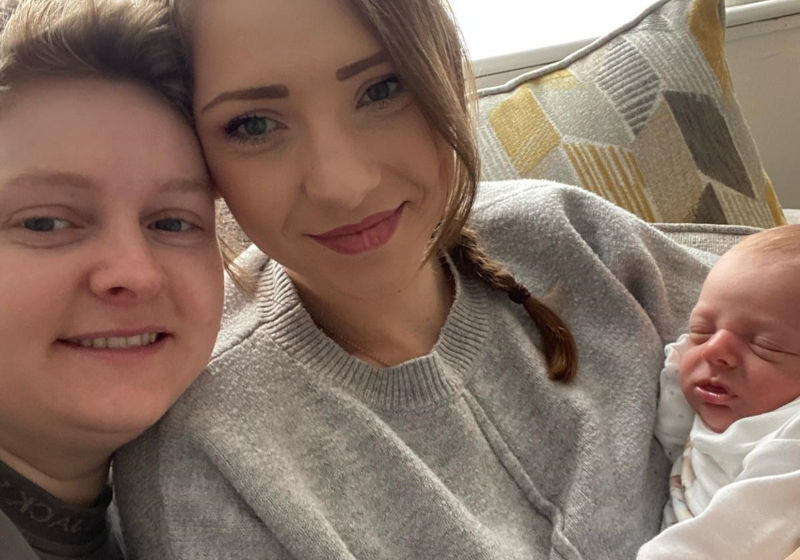HFEA issues guidance about ‘Add-ons’ – additional treatments of benefit to some
16 Jan 2024
Add-ons are optional treatments that may provide benefits to some groups of patients but do not have a strong evidence-base to support their routine use. The HFEA offers guidance to ensure clinics offer best practice and provide objective information to patients.
Reviewing the approach for further treatment
In an ideal world everyone would achieve their dream of a baby with the first embryo transfer, but sadly for many this is not the case.
However, this first cycle does provide the clinician and embryologist with lots of information – such as the response to medication, number of eggs collected and fertilised, quality of the embryos and implantation – and all of this is taken into consideration for the next ovarian stimulation or embryo transfer.
Following an unsuccessful cycle there is an opportunity for the patient to review the approach with the clinician and discuss their next steps.

Personalising treatment to the individual
For the majority of patients, a further fresh or frozen cycle may be all that is required for success.
However, for specific groups of patients, other supplementary treatments – also known as add-ons – might be proposed. These are treatments that lack strong medical evidence of success but in the consultant’s experience have been beneficial to some patients in specific circumstances.
Success in fertility treatment, perhaps more than in other types of medicine, can be impacted by the patient’s emotional wellbeing. Sometimes, making a choice that makes you feel more in control can be beneficial, however knowing if this was the factor that made the difference is very difficult to prove scientifically.
That is why these options are usually only discussed when the need arises.
HFEA reviews guidance on add-ons
The HFEA regulates IVF treatment in the UK and it is keen that add-ons are offered responsibly, as the evidence to support these treatments may be missing, limited or unreliable and the patient might request them after seeing marketing information online.
To enable patients to make a more informed choice the HFEA has produced some guidelines. This includes guidance to Clinics about how they offer these options to patients and advice to patients about clinical efficacy – scientific evidence that these treatments increase the chance of a live birth. This information is provided in the form of a traffic light system relating to improvement of treatment outcomes.
At Bourn Hall we strive to be patient-centric and to give patients options for treatment on the basis of medical need. Some patients want to try ‘add-ons’ and we support them in this choice by providing as much information as is available.
Examples of additional treatments
Below we give a few examples of these supplementary treatments and when they might be recommended. The costs are provided on the website under fees and funding.
The HFEA provides a traffic light system that indicates the evidence available that the treatment will increase the chances of a live birth. Note: all these treatments are clinically proven to be safe.
-
Investigations and interventions on the endometrial lining
A procedure called an Endometrial Scratch may energise the lining of the womb, called the endometrium, rendering it more receptive to future embryos. It is thought to be more helpful for women with previous failed transfers.
Other tests such as EMMA-ALICE sample the endometrium to look for infections or bacterial overgrowth that might benefit from specific treatment.
-
Improving outcomes for women over 35
The chance of genetic abnormalities increases with age, so for some women screening of the embryos before transfer through Preimplantation genetic testing (PGT-A) may reduce the risk of early pregnancy loss.
PGT-A may also reduce the risk of common genetic syndromes, such as Down’s (although it is not used primarily for this purpose).
-
Improving the quality of embryos
An embryo acquires half its DNA from the sperm and half from the egg.
Using a high-powered microscope (IMSI), the best quality sperm can be selected for injection directly into the egg.
Some supplements and growth hormones can also be used to help improve the quality and quantity of eggs produced.
The embryos are graded and the most vigorous one(s) is selected for transfer. Timelapse video offers the benefit of 24/7 assessment and may be used to predict which embryos are most likely to progress to blastocyst (the stage after natural conception where they would implant in the womb).
-
Improving chances of implantation
Many pregnancies can be lost when the embryo fails to implant within the lining of the womb. The hormone progesterone controls the thickening of the endometrium, so additional progesterone prescribed as a vaginal pessary or tablet (and sometimes an injection) may be recommended to support implantation, or the levels of progesterone monitored to provide an indication that this is an issue.
Embryo Glue is thought to help the embryo attach to the lining of the womb and there is an increasing body of evidence to support this.
ERA is a technique that aims to optimise the timing of frozen embryo transfer by taking a small sample from the lining of the womb.
Questions to ask about treatment add-ons
We believe that treatment is a dialogue and patients are invited to ask questions at any time. It can be difficult to take in too much information all at once so don’t worry if you need to double-check things. It is important to us that you feel confident in your choices.
Here are some of the questions you may wish to ask.
- Why are you recommending this add-on for me specifically – how does it work and what are the benefits?
- What is the evidence that it may improve my chances of success?
- What is the additional cost and what are the alternatives?
- Where can I go for more information and who do I contact if I have further questions?

Find out how can we help you
Book a consultation call with our team to find out how Bourn Hall can help you on your fertility journey
Latest articles
Does your company have a Fertility Policy?
Your boss may be the last person you want to tell about your fertility problems…
Bedfordshire mum’s baby joy after ‘grief cycle’ of infertility
“It was like a grief cycle every month, it was so draining,” says Megan from…
Suffolk mum shares her story of joy following the ‘trauma of infertility’
“I still feel emotional when I think back to how sad I felt when we…
Patient reviews you can trust
Genuine experiences from real patients. See why so many trust us with their fertility care.
“We went to an open evening at Bourn Hall Wickford and came away feeling really positive about the place. The staff were really friendly and the presentation was clear about the statistics regarding success rates and live birth rates; their data was very transparent. We came away feeling like we would really be looked after.”
Katy and Leigh are parents to Charlie after IVF
Patient 2023
“We chose to make an appointment at Bourn Hall Wickford because of the favourable reviews. When we got there and met the staff they were just so lovely, making us feel welcome and explaining to us what tests would need to be done and what our options were; we just thought ‘yes, let’s get the ball rolling!”
Jess and Fran are mums to Nathan after IVF with donor sperm
Patient 2023




